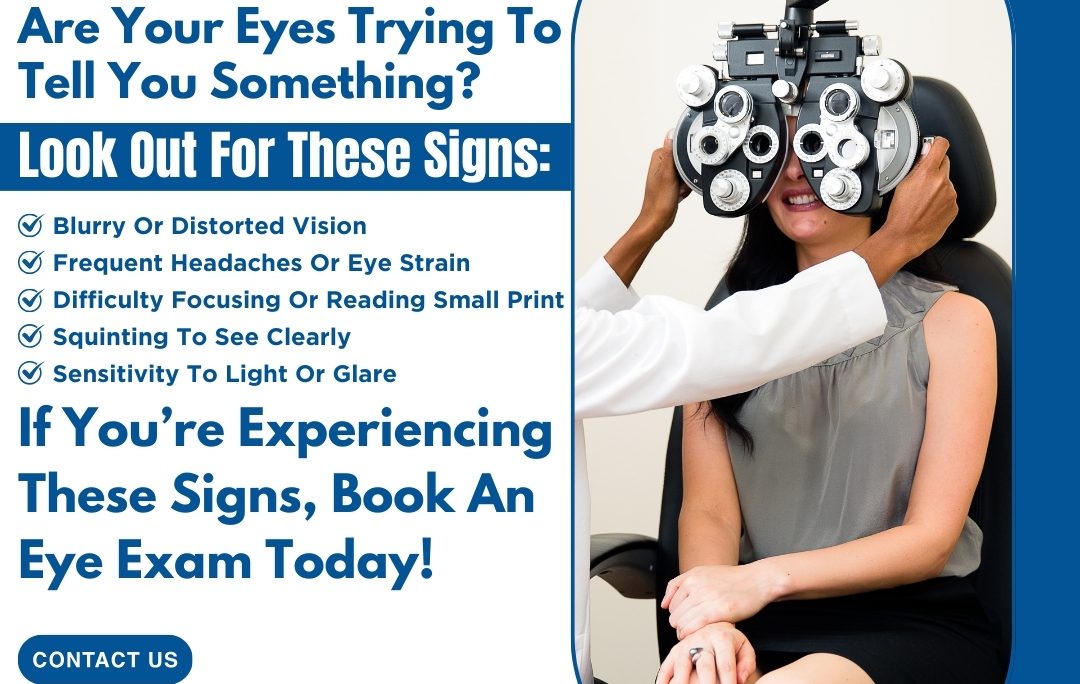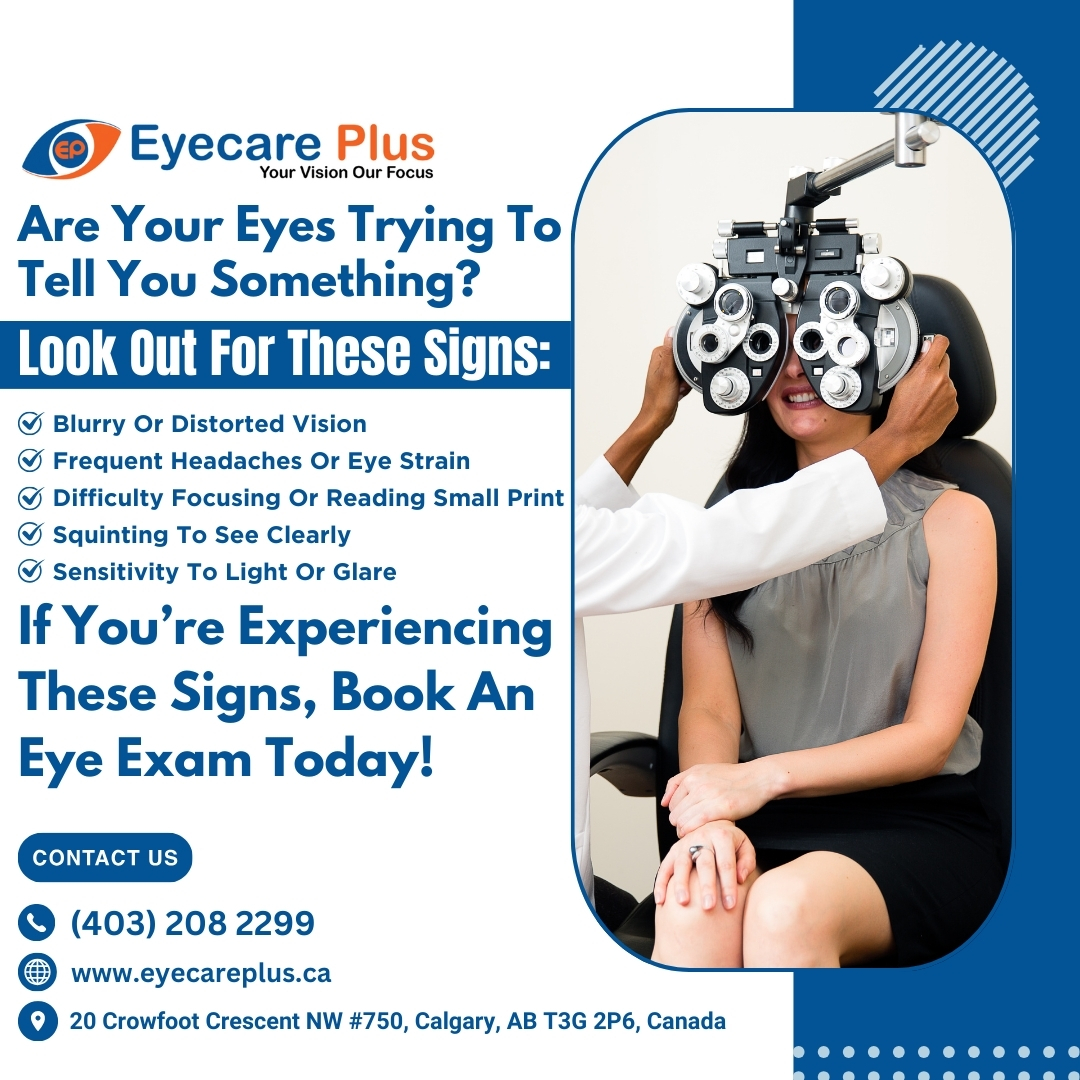Most of us don’t think twice about our vision until something feels off. It might start with small changes, like struggling to read text that used to be clear, noticing blurry road signs while driving, or feeling like your eyes are working harder than usual. At first, these issues seem easy to brush off, often blamed on fatigue, stress, or just “one of those days.”
But here’s the thing, small changes in your vision are subtle signs that your eyes are asking for help. They whisper through these minor shifts, hoping you’ll notice. The problem is, we’re often too busy to pay attention until those whispers turn into something more serious, like persistent headaches, constant eye strain, or sudden changes in vision.
The good news is that recognizing these early signs and visiting an optometrist Calgary AB can make all the difference.
1. Blurry or Distorted Vision
Blurry or distorted vision can creep in slowly or appear suddenly. It often points to common issues like nearsightedness (myopia), farsightedness (hyperopia), or astigmatism, where the shape of your eye affects how light focuses on the retina. However, it can also be a sign of serious conditions like cataracts, macular degeneration, or diabetic retinopathy.
Here are signs you need to watch out for:
- Difficulty reading, even with good lighting
- Trouble recognizing faces from a distance
- Wavy or distorted lines (straight objects appear bent)
Blurry vision means your eyes are signaling that something’s wrong. And when left unchecked, it could worsen over time or indicate underlying diseases that may lead to permanent vision loss.
Important Note: Sudden changes require immediate attention as they could be related to a retinal detachment or even a stroke.
2. Frequent Headaches Linked to Eye Strain
Headaches aren’t always about stress, they can be a sign your eyes are struggling to focus.
Uncorrected vision problems, like needing new glasses or having astigmatism, often force your eyes to work harder, leading to strain and discomfort. Digital eye strain, common from prolonged screen use, can also trigger headaches.
Associated symptoms include:
- A dull ache around the temples or behind the eyes
- Blurry vision after reading or screen use
- Neck and shoulder tension
These headaches can affect daily productivity and quality of life. More importantly, they could signal serious conditions like glaucoma, which increases eye pressure, or ocular migraines, which can impact vision temporarily.
Ignoring persistent headaches can delay the diagnosis of conditions that may worsen without treatment.
3. Sudden Changes in Vision
When vision changes come on suddenly and not gradually, whether it’s blurriness, partial loss, or double vision, it’s a red flag. Causes range from retinal detachment to optic neuritis, or even life-threatening issues like a stroke.
If you experience the following signs, it’s time to see an optometrist or a medical healthcare professional:
- A sudden shadow or “curtain” over your vision
- Loss of vision in one eye or both eyes
- Flashing lights or dark spots
Sudden vision loss is an ocular emergency. Waiting to seek help could mean the difference between full recovery and permanent vision damage. If this happens, go to an emergency room or call for medical help immediately. Remember, in any type of medical emergency, time is everything.
4. Difficulty Seeing at Night or in Low Light
Struggling to see clearly in dim environments, known as night blindness, can affect your ability to drive safely after dark. This condition may be due to cataracts, which cloud the lens of your eye, or a vitamin A deficiency, which impacts the retina’s function. In rare cases, it’s an early sign of retinitis pigmentosa, a progressive disease that affects peripheral vision.
Common signs include:
- Difficulty adjusting from bright to dark settings
- Seeing halos or glare around lights
- Poor depth perception at night
Night vision problems increase your risk of accidents. Since they may signal degenerative eye diseases, early intervention can slow progression and preserve vision.
5. Eye Pain, Redness, or Irritation
Eye pain is never something to ignore. While it might result from something simple, like dry eye syndrome or minor irritation, it could also indicate serious infections, corneal ulcers, or acute angle-closure glaucoma, which can cause rapid vision loss.
These are common symptoms you may notice:
- A burning, stinging, or sharp pain
- Redness that doesn’t improve
- Blurry vision or white or greeny discharge
Severe pain, especially with sudden vision changes, may point to an emergency. For example, glaucoma-related eye pressure can permanently damage the optic nerve within hours.
Seek medical help immediately if you experience intense pain or sudden vision changes.
6. Increased Sensitivity to Light
Photophobia, or sensitivity to light, can make bright environments unbearable. Such symptom can arise from corneal issues, such as abrasions or infections, or from internal eye inflammation like uveitis. And in more severe cases, it may even signal meningitis, especially when accompanied by a stiff neck or fever.
What do you feel if your eyes become sensitive to light?
- Discomfort or pain when exposed to light
- Squinting or closing your eyes frequently
- Watering eyes in bright settings
While mild sensitivity can result from simple causes like fatigue, sudden or severe photophobia demands attention. It may signal an eye infection or neurological issue, both of which can escalate quickly without treatment.
7. Double Vision
Seeing two overlapping images side by side, on top of each other, or both, is known as diplopia, which can occur due to problems with eye muscles, nerve damage, or brain-related issues like stroke, aneurysm, or tumors.
Symptoms include:
- Double images that improve when closing one eye (binocular diplopia)
- Difficulty focusing
- Eye misalignment or drooping eyelids
Sometimes, double vision can indicate serious neurological problems. Ignoring it could delay critical diagnosis and treatment, potentially putting your life at risk in cases like strokes. That’s why immediate medical evaluation is essential.
8. Seeing Floaters, Flashes of Light, or Dark Spots
Floaters, tiny specks, cobwebs, or shadows drifting across your vision are often harmless and related to age. However, a sudden increase in floaters, combined with flashes of light or dark shadows, could mean a retinal detachment, vitreous hemorrhage, or retinal tear.
Here are red-flags you should ignore:
- A sudden burst of floaters
- Flashes like camera flashes in your peripheral vision
- A dark shadow creeping over part of your vision
Retinal detachment is an emergency. Without prompt treatment, it can lead to permanent blindness. Early intervention, often through laser surgery, can reattach the retina and preserve your vision.
9. Trouble Focusing on Objects Up Close or Far Away
If you’re constantly struggling to focus, it might be due to presbyopia (age-related near vision loss), refractive errors, or accommodative issues where your eye muscles can’t adjust properly.
Key symptoms of presbyopia include:
- Blurry vision when reading or driving
- Frequent eye strain or squinting
- Holding objects closer or farther to see clearly
While it may seem like a minor inconvenience, trouble focusing can lead to chronic headaches, eye fatigue, and even worsening vision over time. It can also signal diabetes-related eye issues or early signs of glaucoma, which require medical attention.
10. Frequent Squinting or Needing to Adjust Viewing Distance
Squinting helps temporarily sharpen vision, but if you’re doing it often, it’s a sign your eyes are compensating for uncorrected vision issues like myopia, hyperopia, or astigmatism.
Noticeable patterns include:
- Squinting to see distant signs or read small text
- Moving closer to screens or holding books farther away
- Eye fatigue after focusing for long periods
For children, frequent squinting can delay proper visual development, leading to lazy eye (amblyopia) or other issues. In adults, it may indicate the need for updated glasses or undiagnosed eye conditions. Early correction not only improves clarity but also prevents long-term strain.
Bottom Line
Your eyes do a remarkable job of adapting, often masking issues until they become harder to ignore. However, changes in your vision, no matter how small, should never be overlooked. Signs like blurry vision, frequent headaches, double vision, or sudden flashes of light can point to conditions that may worsen without proper care.
The good news is that many eye problems can be treated effectively when caught early. Regular check-ups with an optometrist in Calgary AB, along with paying attention to these warning signs, can make a significant difference in protecting your vision.
If any of these symptoms feel familiar, it’s time to schedule an eye exam.
Remember, your eyes are your window to the world. That’s why taking care of them is one of the most important health decisions you can make.

















